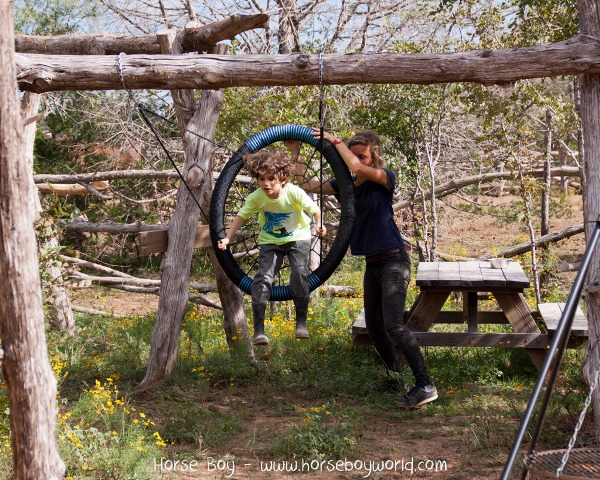- We are evolutionarily programmed to learn on the move – (Leonard et al, 1997)
- Imaging studies have shown that when we exercise there is increased blood flow to the dentate gyrus which is a part of the hippocampus deeply involved in memory formation (Green et al, 2004).
- Imaging studies have shown that exercise stimulates the brain’s most powerful growth factor, BDNF, which is responsible for creating new brain cells and encouraging neurons to connect with one another, both essential parts of learning (Vaynman et al, 2006).
- There is a strong body of evidence that shows a strong relationship between motor and cognitive processes. There are direct links between the cerebellum and the basal ganglia (two parts of the brain that process motor activities) and the parts of the brain that process language and memory i.e. cerebellum activation triggers activation in these other parts of the brain (Middleton & Strick, 1994).
- The vestibular (inner ear) is activated by any movement that stimulates inner-ear motion such as swinging, rolling, jumping or riding a horse. Activation of the vestibular causes activation of the reticular activating system which is critical to our attentional system and learning (Wolfe, 2005).
- Oxygen is essential for brain function, and enhanced blood flow increases the amount of oxygen transported to the brain. Physical activity is a reliable way to increase blood flow, and hence oxygen, to the brain (Medina, 2008)
- Simply standing increases heart rate and this blood flow by up to 10% in just seconds (Krock & Hartung, 1992).
- 68% of high school students in the US do not participate in a daily physical education program (Grunbaum, 2002).
- Numerous studies show that increased exercise leads to better academic performance and increased learning in general (Summerford, 2001).
- Children with dyslexia were helped by a movement program i.e. when they were allowed to move their reading scores increased (Reynolds et al, 2003).
- Children with autism show reduced activation in the pre-frontal cortex, the area of the brain responsible for emotional regulation. This could explain why many children with ASD exhibit symptoms such as irritability, problems with delayed gratification, anxiety and tantrums.
- Children with autism and sensory over-responsivity have stronger brain responses in the areas of the brain that process sensory information as well as the amygdala than children with just autism. Both groups of children showed an initial similar brain response but those children with sensory over-sensitivity took much longer to get used to the stimuli. It is suggested that those children with autism that do not have sensory over-responsivity may be compensating through strong brain connectivity between their pre-frontal cortex and amygdala.
- Recent research coming out of The University of Loughborough shows that not only are children starting school less physically ready than ever before, but that teachers are noticing this change and its impact in the classroom.
References
- Green, D. J., Maiorana, A., O’Driscoll, G., & Taylor, R. (2004). Effect of exercise training on endothelium-derived nitric oxide function in humans. The Journal of physiology, 561(1), 1-25.
- Grunbaum, J. A., Kann, L., Kinchen, S. A., Williams, B., Ross, J. G., Lowry, R., & Kolbe, L. (2002). Youth risk behavior surveillance—United States, 2001. Journal of School Health, 72(8), 313-328.
- Krock, L. P., & Hartung, G. H. (1992). Influence of post-exercise activity on plasma catecholamines, blood pressure and heart rate in normal subjects. Clinical Autonomic Research, 2(2), 89-97.
- Leonard, W. R., & Robertson, M. L. (1997). Comparative primate energetics and hominid evolution. American Journal of Physical Anthropology, 102(2), 265-281.
- Medina, J. (2008). Brain rules: 12 principles for surviving and thriving at work, home, and school. Pear Press
- Middleton, F. A., & Strick, P. L. (1994). Anatomical evidence for cerebellar and basal ganglia involvement in higher cognitive function. Science, 266(5184), 458-461.
- Reynolds, D., Nicolson, R. I., & Hambly, H. (2003). Evaluation of an exercise‐based treatment for children with reading difficulties. Dyslexia, 9(1), 48-71.
- Summerford, C. (2001). What Is the Impact of Exercise on Brain Function for Academic Learning. Teaching Elementary Physical Education, 12(3), 6-8.
- Vaynman, S. S., Ying, Z., Yin, D., & Gomez-Pinilla, F. (2006). Exercise differentially regulates synaptic proteins associated to the function of BDNF. Brain research, 1070(1), 124-130.
- Wolfe, P. (2005). Teaching with the Brain in Mind. ASCD.
- Richey, J.A., Damiano, C.R., Sabatino, A., Rittenberg, A., Petty, C., Bizzell, J., Voyvodic, J., Heller, A.S., Coffman, M.C., Smoski, M., Davidson, R.J., & Dichter, G.S. (2015) Neural Mechanisms of Emotion Regulation in Autism Spectrum Disorder.Journal of Autism and Developmental Disorders.
- Green, S.A., Hernandez, L., Tottenham, N., Krasileva, K., Bookeheimer, S.Y. & Dapretto, M. (2015) Neurobiology of Sensory Overresponsivity in Youth With Autism Spectrum Disorders. JAMA Psychiatry, 2015 Jun 10. doi: 10.1001/jamapsychiatry.2015. 0737. [Epub ahead of print]
- http://www.lboro.ac.uk/media-centre/press-releases/2016/september/research-finds-4-year-olds-are-not-physically-ready-to-start-school.html
![]()
